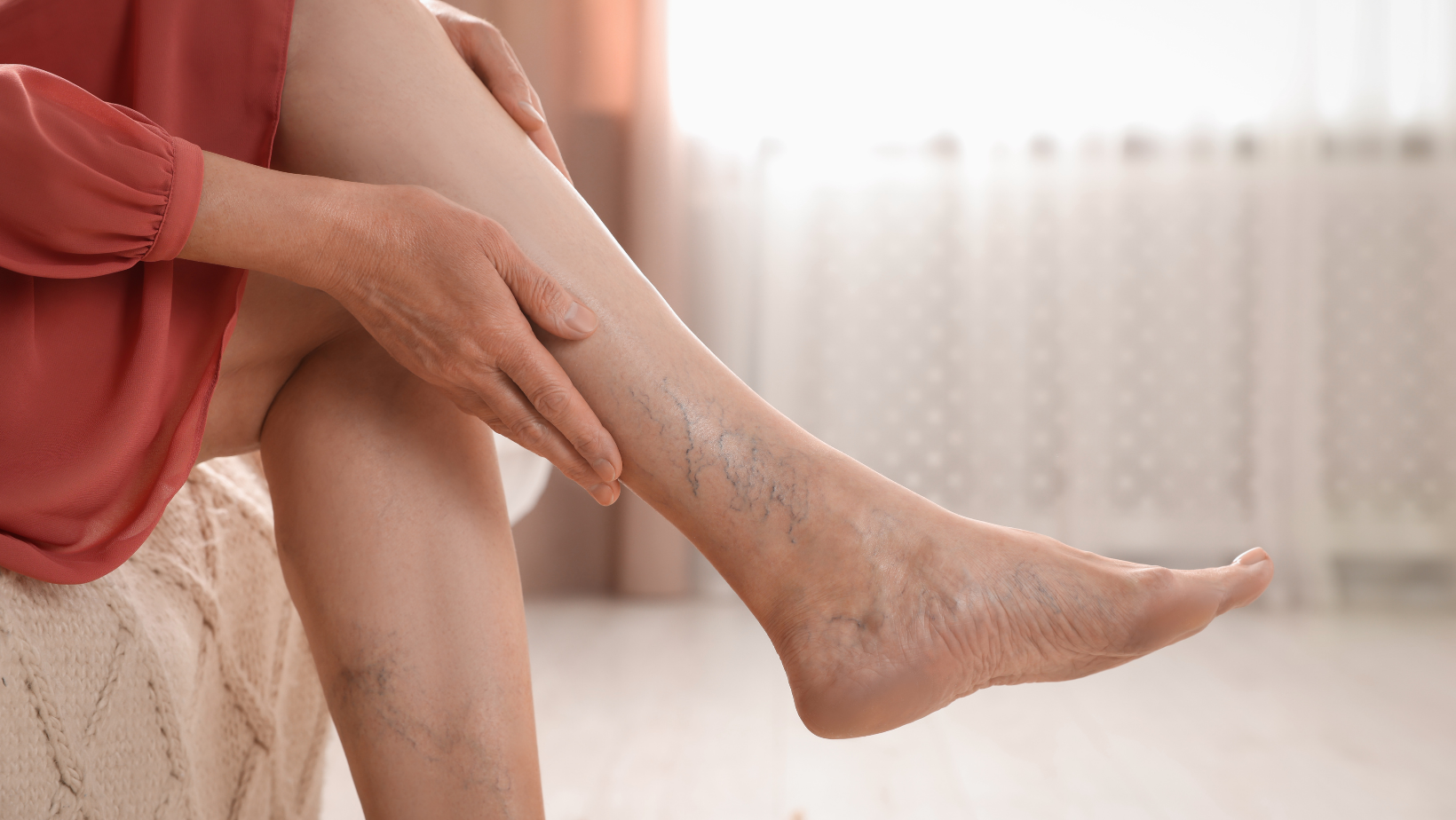Category
Varicose veins are a common vascular condition that occurs when veins become enlarged, twisted, and visibly raised on the skin's surface.

Have any questions?
If you have any questions, feel free to contact us at [email protected]. A member of our support team will help you shortly.
Share this blog
Fatigue
Energy
Stress
Sleep
Varicose veins are a common vascular condition that occurs when veins become enlarged, twisted, and visibly raised on the skin's surface. While they are often considered a cosmetic concern, varicose veins can also cause discomfort and, in some cases, lead to more severe health issues. Understanding the symptoms, the underlying causes, and the treatment options are crucial for effectively managing varicose veins.
One of the primary signs of varicose veins is the appearance of twisted, bulging veins that are visible just beneath the skin's surface. These veins are often blue or dark purple.
Individuals with varicose veins may experience aching or heaviness in the legs, particularly after prolonged periods of standing or sitting.
Varicose veins can cause pain or discomfort, ranging from a dull ache to a throbbing sensation. This discomfort may worsen after extended periods of standing.
Swelling, especially around the ankles and lower legs, is a common symptom of varicose veins. This swelling may be more pronounced at the end of the day.
Some individuals with varicose veins may experience itching or a burning sensation over the affected veins.
Skin over varicose veins may change, including discoloration, dryness, or inflammation. In severe cases, skin ulcers may develop.
The risk of developing varicose veins increases with age. Over time, wear and tear on the veins' valves can lead to their dysfunction.
A family history of varicose veins can predispose individuals to the condition, suggesting a genetic component.
Women are more likely than men to develop varicose veins, with factors such as hormonal changes during pregnancy, childbirth, and menopause contributing to the increased risk.
Pregnancy places added pressure on the veins in the pelvic region, and hormonal changes can affect vein walls, increasing the likelihood of varicose veins.
Excess weight stresses the veins, particularly those in the legs, making obesity a risk factor for varicose veins.
Jobs that involve prolonged periods of standing or sitting may contribute to the development of varicose veins.
Insufficient physical activity can lead to poor circulation, increasing the risk of varicose veins.
Conditions that result in chronic venous insufficiency, where veins have difficulty returning blood to the heart, can contribute to varicose veins.
Vein Stripping and Ligation: Invasive procedures involving removing or tying off the affected veins. While still performed, these surgeries have become less familiar with the advent of minimally invasive options.
In rare cases, endoscopic surgery may be recommended to treat severe varicose veins. A small camera is inserted into the affected vein to visualize and treat the issue.
Regular physical activity promotes healthy circulation and strengthens the muscles supporting veins.
Maintaining a balanced diet with adequate fibre helps prevent constipation, reducing the risk of varicose veins.
Maintaining a healthy weight alleviates pressure on veins, reducing the likelihood of varicose veins.
Elevating the legs above heart level when resting helps improve blood circulation and reduce swelling.
Wearing compression stockings provides external support to veins and helps alleviate symptoms.
Taking breaks to move and change positions during long periods of sitting or standing prevents undue stress on veins.
Varicose veins are a common vascular condition that, while often benign, can cause discomfort and affect one's quality of life. Understanding the symptoms, addressing risk factors, and exploring appropriate treatment options are essential for managing varicose veins effectively. With a combination of conservative measures, minimally invasive procedures, and lifestyle modifications, individuals can alleviate symptoms, improve vein function, and reduce the impact of varicose veins on their overall well-being. Seeking advice from healthcare professionals is crucial for an accurate diagnosis and tailored treatment plan based on individual needs.